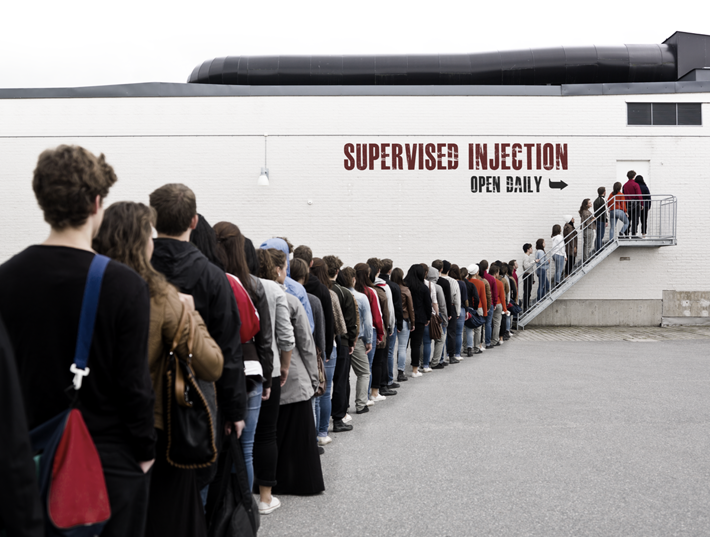Supervised Injection Sites—A Solution to the Opiate Epidemic or a Contributor to the Problem?

In the morass of 21st-century addiction, various states, officials, and focus groups have innovated very unique, alternative, and controversial approaches to the modern addiction problem. One approach has been something that seems to break the very fabric of common sense itself. This is the approach of supervised injection sites.
Supervised injection sites are fully legal, fully sanctioned, medical locations where IV drug users are able to avail themselves of a heroin or other IV drug fix, all in a safe, secure, and monitored location. They are given clean needles, watched over, and attended to should they overdose.
Supervised injection sites have been met with agreement and sympathetic understanding by some, and ruthless disagreement and contention by others. The very concept of supervised injection sites seems to be counterproductive to actually handling a drug problem. Supervised injection sites are essentially a statement of resignation, an admittance that IV drug use is here to stay and that, “If we can’t get them to stop using drugs, we might as well make drug use safe for them.”
How Supervised Injection Sites Began
According to the Centers for Disease Control and Prevention, heroin overdose deaths increased by two-hundred and eighty-six percent between 2002 and 2013. Such death rates have increased far more since then. It’s understandable that the American people and State governments would be clamoring for solutions and running themselves ragged looking for ways to lower the death toll, but a solution that involves simply enabling more addicts is not really a solution.
In 2014, one man and his team formulated a plan to reduce overdose deaths. This came from Svante Myrick, son of an addict, mayor of Ithaca, New York. He created a forty-five person committee of law enforcement officials, business owners, community members, and healthcare experts. After much deliberation and discussion, the committee and Myrick arrived at the “solution” of opening supervised injection facilities in the city.
Logical Inaccuracies of Supervised Injection Sites
Supervised injection sites are not a new idea. They are legal in Canada, some European countries, and some Asiatic countries. There are easily more than one-hundred supervised injection sites worldwide.
Bringing such sites to the U.S. however, where we value treatment over enablement, is a bit of a different story. However, since Mayor Myrick opened the first supervised injection site in 2014, several such sites have opened up across the nation where they are legal. They have not contributed to a direct reduction in overdose rates. In fact, overdose statistics have continued to increase in states that have supervised injection sites, just as they have increased in other states.
Supervised injection sites do not provide drugs to addicts and they do not accept addicts into their centers when such addicts are already under the influence, but they do provide a safe haven for addicts who need to go somewhere to use drugs. Such facilities also provide clean needles and other medical support. They do not solve a growing drug problem, however.
The logical inaccuracy of supervised injection sites is relevant in the very nature of these centers. These centers essentially admit defeat and embody the concept that we can never fully address addiction, that we can never get rid of IV drug use, and that we might as well admit defeat and try to keep those who abuse drugs alive and keep them safe from overdoses.
This is a loser’s stance. A better approach would be to help addicts get treatment. A better approach would be to encourage addicts to make a positive change in their lives. A better approach would be to use the resources that would be spent on supervised injection sites on helping addicts through rehabilitation centers and treatment programs. That is a real solution.

Sources:

